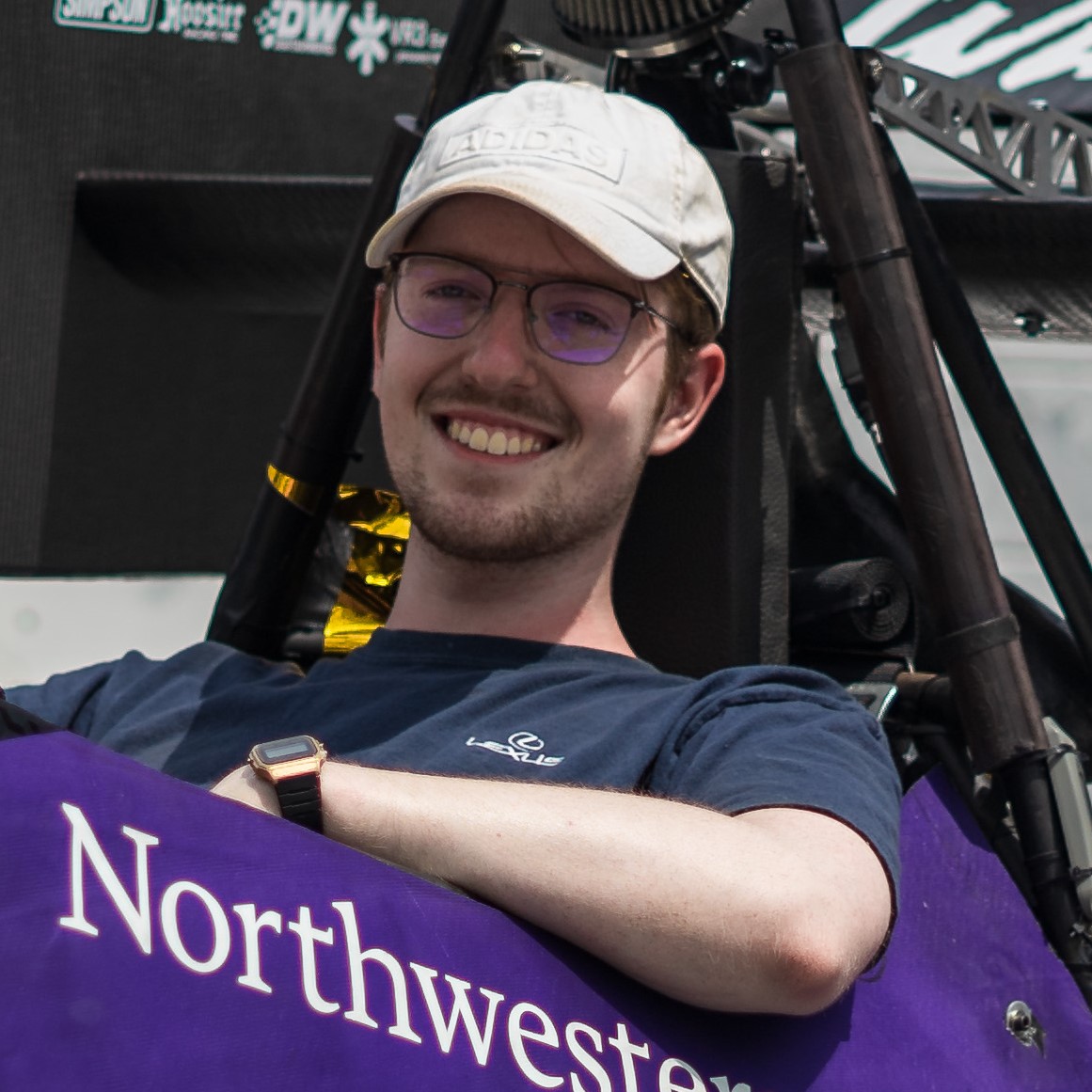-

-
John Arey
- Home
- All Projects
- About Me
- Just for Fun
- Contact
- Resume
For the 2020-21 Northwestern Formula Racing car, I chose to design and manufacture the vehicle’s frame. The focus I took was to adapt the frame geometry to meet changes in ride height and suspension geometry, and to accommodate an undertray as part of the aerodynamics package. This was all to be achieved without significantly increasing weight while maintaining or increasing the torsional stiffness of the frame.
Major frame geometry was extrapolated from suspension geometry and calculations done by suspension sub-team members. I then used the FSAE rules and past iterations of the frame to inform my design, constructed a wireframe model, and then modeled weldments and tube copes on said wireframe model to construct the completed frame.
Due to time constraints, I was not able to complete physical testing of the frame’s torsional stiffness, though I was able to complete FEA studies, which indicated that the frame has slightly better torsional stiffness than previous years. A beam approximation was used to shorten time between iterations, since remote use of school software had limited memory and processor thread counts. Images of real-world torsional stiffness testing on a custom rig can be found to the right, in addition to images of the FEA results for the 2021 frame.